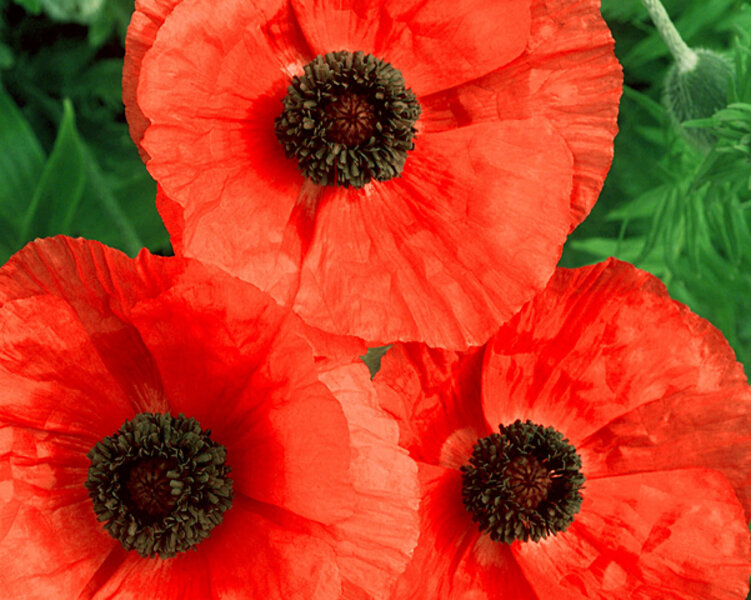Starlets of the garden
Loading...
Every spring I debate with myself about Oriental poppies, Papaver orientale. If an image doesn't come immediately to mind, think big and gorgeous, the kind of bloom that Georgia O'Keeffe liked to paint.
My reservation about Oriental poppies isn't about their visual showiness but with their liabilities as garden plants: Their bloom lasts only a moment, they are easily damaged by wind and rain, they have trouble standing up by themselves, and their post-flower foliage is weedy and lasts far too long.
Like movie actresses who rely on their looks, their moment in the sun is brief.
My small poppy collection includes a traditional orange, which I like least; several reds, including the old-timer "Beauty of Livermere"; the salmon-pink "Cedric Morris"; and "Patty's Plum," a dusky purple cultivar (a variety produced by selective breeding) that began as a volunteer in an English compost pile – a good argument for not sending your green waste to the local landfill.
There are still more Oriental poppies, including whites and cultivars with doubled petals, ruffled petals, and petals with edges that are fringed or serrated.
Whatever the petal color, the flower's center will be blotched with black or another dark color and contain a large, decorative seed capsule surrounded by dark stamens.
Maybe I haven't dug out my poppies because they are so easy to grow, are not particular about soil and site, have no serious bug or disease problems, are drought-tolerant, and cope with both heat and cold (USDA Zones 3 through 9). They do best in full sun but remarkably well in partial shade.
Despite their reputation for not liking to have their roots disturbed – transplanting large plants can be iffy – Oriental poppies are easy to propagate from root cuttings. Also, all of today's Oriental poppies are hybrids, which means their seeds won't come true, but it is easy to grow plants from seed if you don't expect them to look like the parent plant.
O'Keeffe must have set up her easel in the garden, because Oriental poppies aren't ideal flowers for the vase. Open blooms begin to fall apart almost the minute you cut them, but if you're keen for a bouquet, pick flowers with buds that are ready to open and sear the end of the stems – hold them in an open flame for a few seconds – before you place them in water.
After all, who can resist a gorgeous face, in the garden or on the screen?





